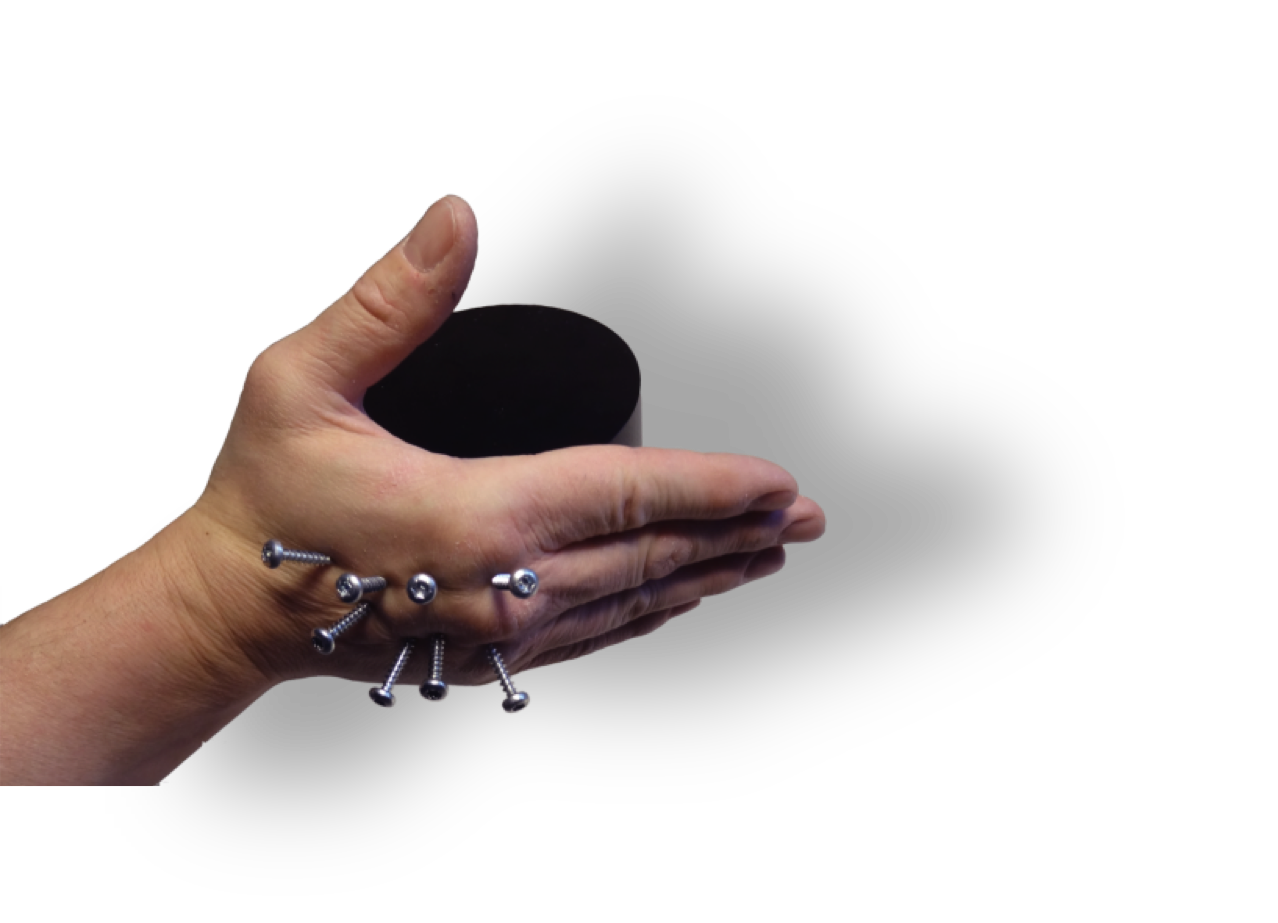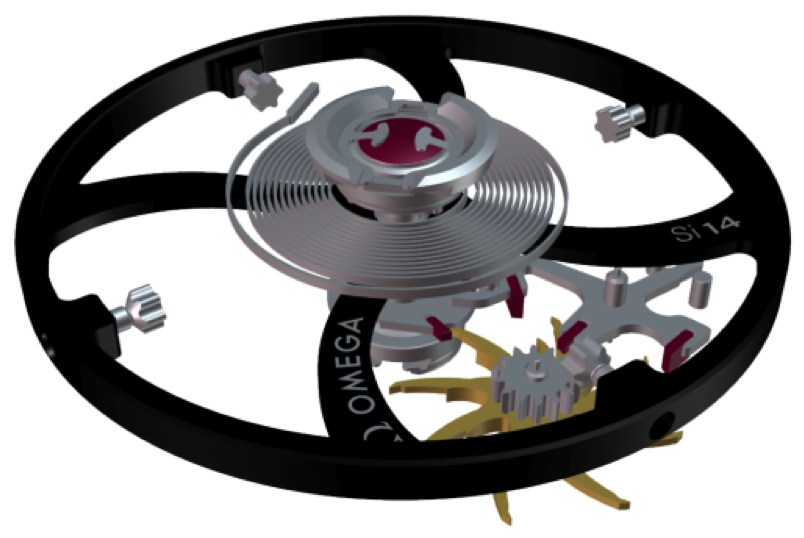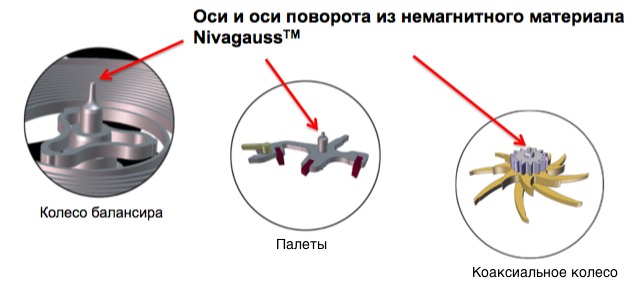The most antimagnetic watch in the world
The other day I visited a curious presentation - Omega represented “the most antimagnetic watch in the world”: “for the first time in the history of the watch industry, a mechanism was developed that can completely solve the problem of the effect of magnetic fields on a mechanical watch.” Honestly, until recently I didn’t even think about why a watch needs antimagnetic protection. Of course, everyone knows that if you bring a magnet to a mechanical watch, they will stop and forever, but it is unlikely that anyone will consciously deal with the damage of their watches, knowing this fact. But to completely avoid the effects of magnets on the clock is impossible.
I don’t want to bore me with the details of the presentation, I’ll just share what I learned about the effects of the magnets on the watch, and a little bit about those “most non-magnetic watches in the world.”
Have you ever thought about how many magnets around us? A cover for iPad, a women's handbag with a magnetic clasp, an electric shaver, a refrigerator door, a mobile phone, magnetic frames in supermarkets and airports, powerful studio speakers, etc. - magnets are everywhere, and every year they become more and more.
')


And this is one of the reasons that the reliability of modern mechanical watches, despite the efforts of manufacturers, is still not as close to absolute as we would like, because the details of the watch mechanism are affected by the magnets that surround us everywhere: at work, at home, in transport .
1. Under the influence of magnetic fields, the working capacity of the watch or the accuracy of the stroke is impaired, however, after the cessation of this effect, the watch restores its characteristics. This is how household magnets work. If suddenly you want to refresh yourself at night and accidentally leave your watch on the refrigerator, then they, of course, will suffer from the impact of the magnet, with the help of which the refrigerator door is closed, but it will not fail at all.
2. Under the influence of magnetic fields, with increasing magnetic field strength (magnetic induction), the watch loses its performance, and they need to be demagnetized.
Strong magnetic fields arise from high-current currents: for example, during a short circuit or “lighting up” a car. Moreover, you can magnetize the clock even when the call is activated on your mobile: the current path in the phone's battery is a small loop in which magnetic fields are formed. While the call is triggered, the current consumption from the battery can reach a level of 10 Amps. The distance from the clock to the mobile is about 1 cm, and even a tension of 1 kA / m is enough for magnetization. Thus, it is enough just to spend hours near any radiation object - they will remember this for a long time.

The problem of the magnetization of the clock is in the heart of the clock mechanism, where there are two springs: a balance spring (hair spring) and a winding spring, which provides the mechanism with energy. It is the hair spring that attaches to the pendulum that determines how often this pendulum swings. For most of the history of watchmaking, the balance spring was made of blued steel, and it is known to be magnetized like any other steel. When it magnetizes, the coils of the spring are attracted to each other, as a result of which the watch mechanism begins to “go crazy”.
And although anti-magnetic materials are used in the production of most modern watches, they do not completely eliminate the screen version at the household level, providing protection only from short-term exposure to magnetic fields. So the problem of magnetization of watches remains very relevant, especially for those people of certain professions. This problem was solved by the engineers of Asulab, Nivarox and ETA, members of the Swatch Group.
In 2008, they created a Si14 silicon spring. Why precisely from silicon? Because this element has extraordinary stability and resistance to the effects of magnetic fields.

This was followed by the creation of the axes of the balance wheel wheel, pallets, coaxial wheel and pivot axes from the patented non-magnetic material Nivagauss ™ (an alloy of iron, neodymium and boron). The steel for the coaxial plates of the mechanism was also replaced with non-magnetic materials; spring shock absorbers made of amorphous metal. As a result, a completely new coaxial caliber 8508 was developed, made entirely from non-iron materials.

Thus, the Seamaster Aqua Terra watch was born, a revolutionary feature of which is the ability to withstand a magnetic field of over 1.5 Tesla (15,000 gauss or 1,200,000 A / m). And this is 15 times ahead of the indicators of all previous antimagnetic mechanisms.

Due to the fact that in these watches there is no traditional protective container, the watches do not look bulky and heavy. Their back cover is completely transparent, so that through it the mechanism itself and its decoration are visible. By 2014, all coaxial clocks will be equipped with such an anti-magnetic mechanism.
I wonder how soon other watch manufacturers will catch up to a given bar? And how much such watches will be in demand?
I don’t want to bore me with the details of the presentation, I’ll just share what I learned about the effects of the magnets on the watch, and a little bit about those “most non-magnetic watches in the world.”
Have you ever thought about how many magnets around us? A cover for iPad, a women's handbag with a magnetic clasp, an electric shaver, a refrigerator door, a mobile phone, magnetic frames in supermarkets and airports, powerful studio speakers, etc. - magnets are everywhere, and every year they become more and more.
')
Evolution of magnetic energy density


And this is one of the reasons that the reliability of modern mechanical watches, despite the efforts of manufacturers, is still not as close to absolute as we would like, because the details of the watch mechanism are affected by the magnets that surround us everywhere: at work, at home, in transport .
When exposed to magnetic fields on the clock, two scenarios can be implemented:
1. Under the influence of magnetic fields, the working capacity of the watch or the accuracy of the stroke is impaired, however, after the cessation of this effect, the watch restores its characteristics. This is how household magnets work. If suddenly you want to refresh yourself at night and accidentally leave your watch on the refrigerator, then they, of course, will suffer from the impact of the magnet, with the help of which the refrigerator door is closed, but it will not fail at all.
2. Under the influence of magnetic fields, with increasing magnetic field strength (magnetic induction), the watch loses its performance, and they need to be demagnetized.
Strong magnetic fields arise from high-current currents: for example, during a short circuit or “lighting up” a car. Moreover, you can magnetize the clock even when the call is activated on your mobile: the current path in the phone's battery is a small loop in which magnetic fields are formed. While the call is triggered, the current consumption from the battery can reach a level of 10 Amps. The distance from the clock to the mobile is about 1 cm, and even a tension of 1 kA / m is enough for magnetization. Thus, it is enough just to spend hours near any radiation object - they will remember this for a long time.

The problem of the magnetization of the clock is in the heart of the clock mechanism, where there are two springs: a balance spring (hair spring) and a winding spring, which provides the mechanism with energy. It is the hair spring that attaches to the pendulum that determines how often this pendulum swings. For most of the history of watchmaking, the balance spring was made of blued steel, and it is known to be magnetized like any other steel. When it magnetizes, the coils of the spring are attracted to each other, as a result of which the watch mechanism begins to “go crazy”.
And although anti-magnetic materials are used in the production of most modern watches, they do not completely eliminate the screen version at the household level, providing protection only from short-term exposure to magnetic fields. So the problem of magnetization of watches remains very relevant, especially for those people of certain professions. This problem was solved by the engineers of Asulab, Nivarox and ETA, members of the Swatch Group.
In 2008, they created a Si14 silicon spring. Why precisely from silicon? Because this element has extraordinary stability and resistance to the effects of magnetic fields.

This was followed by the creation of the axes of the balance wheel wheel, pallets, coaxial wheel and pivot axes from the patented non-magnetic material Nivagauss ™ (an alloy of iron, neodymium and boron). The steel for the coaxial plates of the mechanism was also replaced with non-magnetic materials; spring shock absorbers made of amorphous metal. As a result, a completely new coaxial caliber 8508 was developed, made entirely from non-iron materials.

Thus, the Seamaster Aqua Terra watch was born, a revolutionary feature of which is the ability to withstand a magnetic field of over 1.5 Tesla (15,000 gauss or 1,200,000 A / m). And this is 15 times ahead of the indicators of all previous antimagnetic mechanisms.

Due to the fact that in these watches there is no traditional protective container, the watches do not look bulky and heavy. Their back cover is completely transparent, so that through it the mechanism itself and its decoration are visible. By 2014, all coaxial clocks will be equipped with such an anti-magnetic mechanism.
I wonder how soon other watch manufacturers will catch up to a given bar? And how much such watches will be in demand?
Source: https://habr.com/ru/post/186736/
All Articles